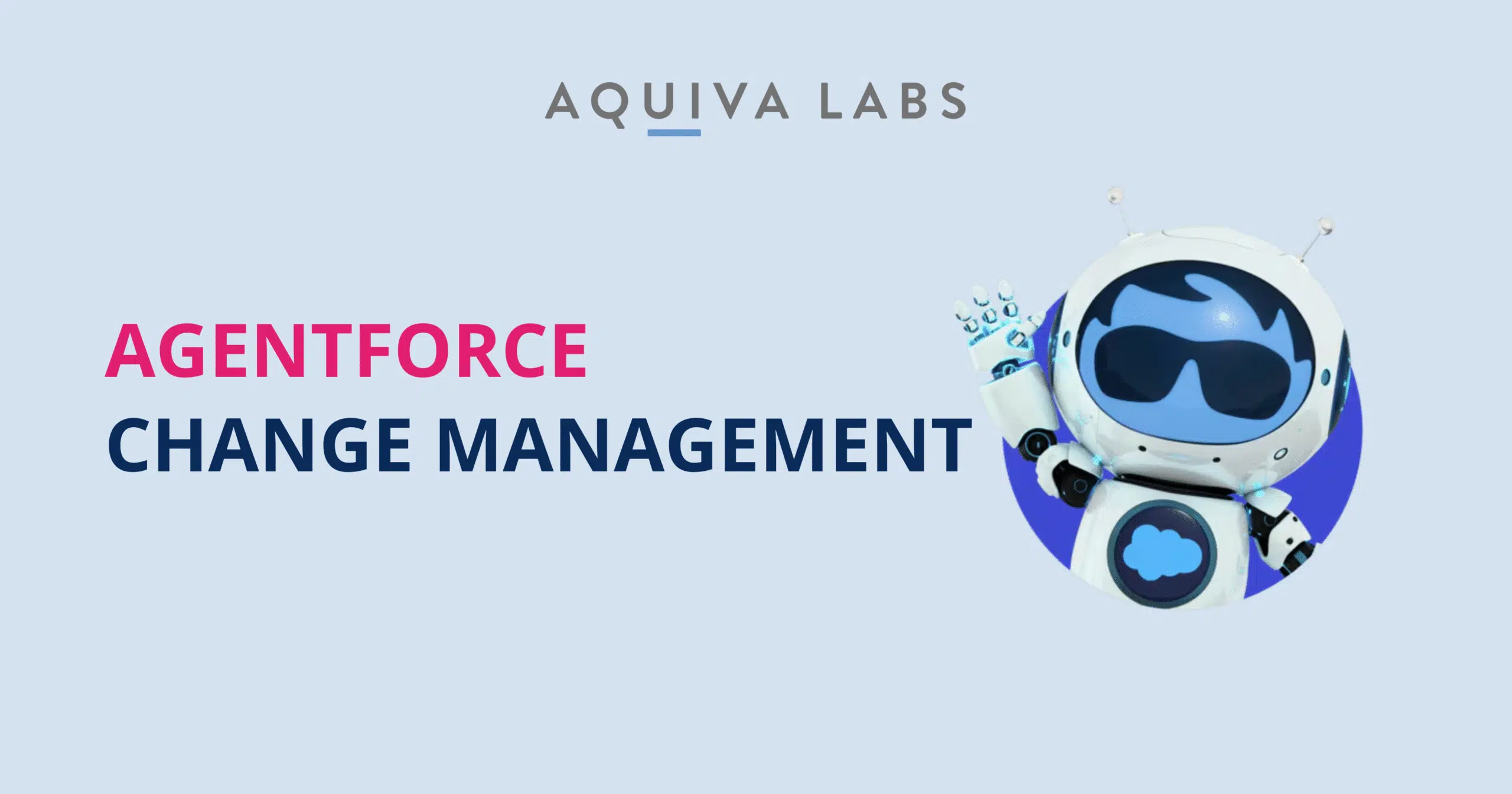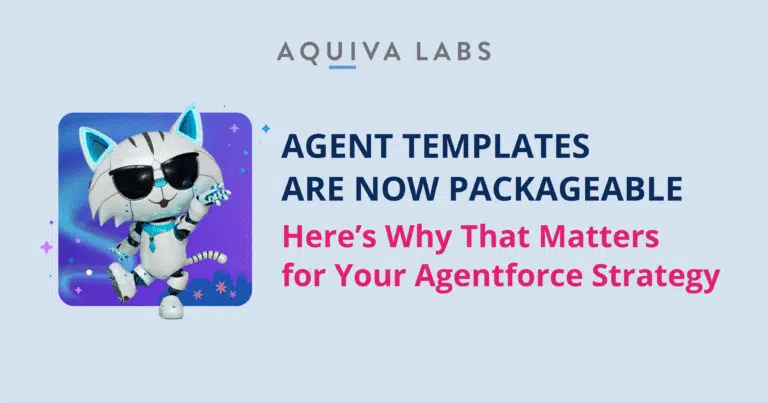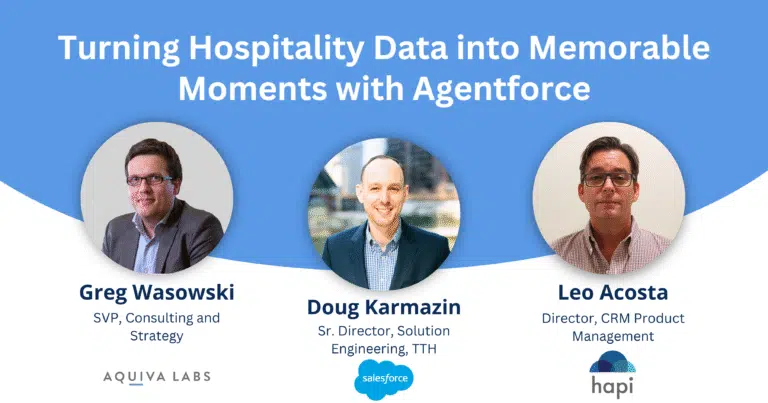AI adoption is collapsing under its hype. In 2025, 42% of companies abandoned most of their AI initiatives, up from 17% the previous year. Three out of four projects still fail to deliver. And only 4% of organisations reach production-scale impact. The reasons are consistent: insufficient data, vague outcomes, and shallow change management.
Yet most strategies still treat adoption like a footnote. A few slides on “training and enablement.” It’s not enough. If organisations don’t change the way people look at AI, they definitely don’t make people use AI. And it’s the reason Aquiva Labs built AIM: the Agentforce Integration Methodology.
AIM isn’t a framework for compliance. It was created as a method for impact.
AI as a Cost Centre vs AI as a Competitive Edge
McKinsey puts it plainly: only 30% of change initiatives succeed. That number hasn’t moved in a decade. Why? Because most firms still treat change as a communication problem or an afterthought. Yet recent data from Pisteyo and WalkMe shows that deliberate change management can boost AI transformation success rates by up to 70%.
That delta, 30% to 70%, is the difference between AI as a cost centre and AI as a competitive edge. And it hinges on doing the unglamorous work: aligning executives, clarifying goals, mapping workflows, and involving the people who will use the system. That’s the core of AIM.
Framework and Stages
The methodology has four pillars, each anchored in the reasons AI projects fail:
- Data-Driven
Nearly half of failed initiatives cite data quality or access issues. AIM begins with a data audit, not just schema validation. If the AI doesn’t have the right context, it won’t make the right decisions. - User-Centric
Adoption isn’t just about training. It’s about whether the system makes users’ lives easier. AIM maps AI capabilities to real-world tasks, with role-specific flows built into the design. - Trust-Based
Business Insider named employee resistance the biggest AI barrier in 2025. That’s not about fear of the technology. It’s fear of being sidelined, judged, or replaced. AIM tackles this directly with pilot-led deployment, hands-on feedback loops, and full visibility into how Agentforce/other AI tools work. - Security and Compliance
AI’s value drops to zero if it can’t be trusted with sensitive data. AIM bakes in governance from day one. Agentforce runs on Salesforce’s Einstein Trust Layer, ensuring no third-party LLM sees or stores customer data. For regulated industries, it’s a table-stakes requirement.
5 Stages of AI Adoption
AIM follows a clear progression. Not because process matters more than progress, but because skipping steps invites failure.

- Executive Alignment
Most AI initiatives fail before they start, at the strategy table. AIM begins with business leaders, not builders. What’s the goal? What will success look like in six months? What changes will this demand from teams? - Evaluation & Planning
This is where abstraction ends. Aquiva works with teams to review current workflows, define expected KPIs, and test-fit Agentforce to those objectives. The output is clarity, not a backlog. - Design & Configuration
AIM supports various build paths, including pre-built AppExchange solutions, custom agents, and hybrids. Each is mapped to actual workflows. Configuration includes data sources, flows, and business logic. Nothing gets added unless it supports a real task. - Pilot & Testing
A contained rollout with a small team. Not just to catch bugs, but to validate usage. Does the agent help? Are the prompts clear? Are people using it, or bypassing it? This is the moment to course-correct. - Rollout & Optimisation
Role-based training, hands-on sessions, and live support channels. Feedback is continuous. The system evolves. So do its users.
Designed for Constraint, not Just Ambition
Aquiva Labs built AIM after witnessing too many well-funded projects stall, not because the technology failed, but because the change was poorly managed. And because teams often underestimate what adoption entails.
Consider the 2025 Kearney survey, which found that only 26% of firms generate real value from AI beyond the pilot stage. That’s not a technology failure. That’s a planning failure. AIM exists to prevent that.
The fundamental constraint isn’t model accuracy but organisational readiness. And that’s what AIM is designed to address.
Not with theory. But with a plan that holds up under pressure.
Contact us if you want to hear more about AIM – Agentforce Integration Methodology. Your business will thank you for that!
Author

Barbara Laskowska
Senior Consultant
Co-authors

Greg Wasowski
SVP, Consulting and Strategy




